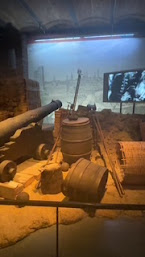Architecture and Spending: A Visit to La Sagrada Familia
On a Sunny afternoon, I visited La Sagrada Familia and learned about its architecture through a guide. Its intricate design covers every portion of its body, and its ambitious structure left me awestruck. Gaudí's masterpiece isn't just a church but a living symbol of Barcelona's identity, culture, and even political tension. As beautiful as it is, I was surprised to hear from a tour guide that not everyone sees it the same way.
While many admire it as a global architectural treasure, others, especially locals, criticize the project as a misuse of city funds. Some argue that the decades-long construction (140 years) is more about attracting tourists than serving the city's needs. These critics view the cathedral as a luxury in Barcelona that they cannot afford. Expecially since other accommodations seemed underbudgeted in the city. This idea is between public spending on cultural symbols vs. essential services, which reminded me of how public spaces reflect political priorities. A concept mentioned in class was identity and politics with Catalans, which I feel the cathedral represents as a large landmark for the citizens of Barcelona.
Before this trip, I didn't realize how deeply politics is embedded in Spain's cultural landmarks. The Sagrada Familia isn't just a church, it's a contested space. Some view it as a distraction from more urgent social issues. Even though it's funded partly by private donations, the surrounding infrastructure and city planning affect make it very much a public concern. The history of the monument and how, in the past, as a taxation on the citizens, still holds a heavy burden with locals. The tour guide mentioned his friend thought it was the ugliest building in Barcelona for what its structure cost. This relates to how politics shapes public opinions and how identity is built through cultural symbols. This situation made me reflect on how American and Spanish views on public spending and symbolic architecture differ. In the U.S., there's often little skepticism about government spending on grand public art- but in Spain, the symbolism itself carries enormous weight, especially in regions like Catalonia, where cultural identity is in politics.
This experience helped me realize how urban planning and politics are deeply connected. It caused me to look beyond appearances and ask questions about identity and resources. One unexpected moment was when a local bumped into me during our tour and commented stupid tourist to his friend. This was very surprising, but even more so on point to how locals feel about tourists visiting what we view as an attraction.
Overall, visiting La Sagrada Familia deepened my understanding of how politics and culture shape citizens' views. But also my appreciation for the human ability to create, especially as a Catholic.




Comments
Post a Comment